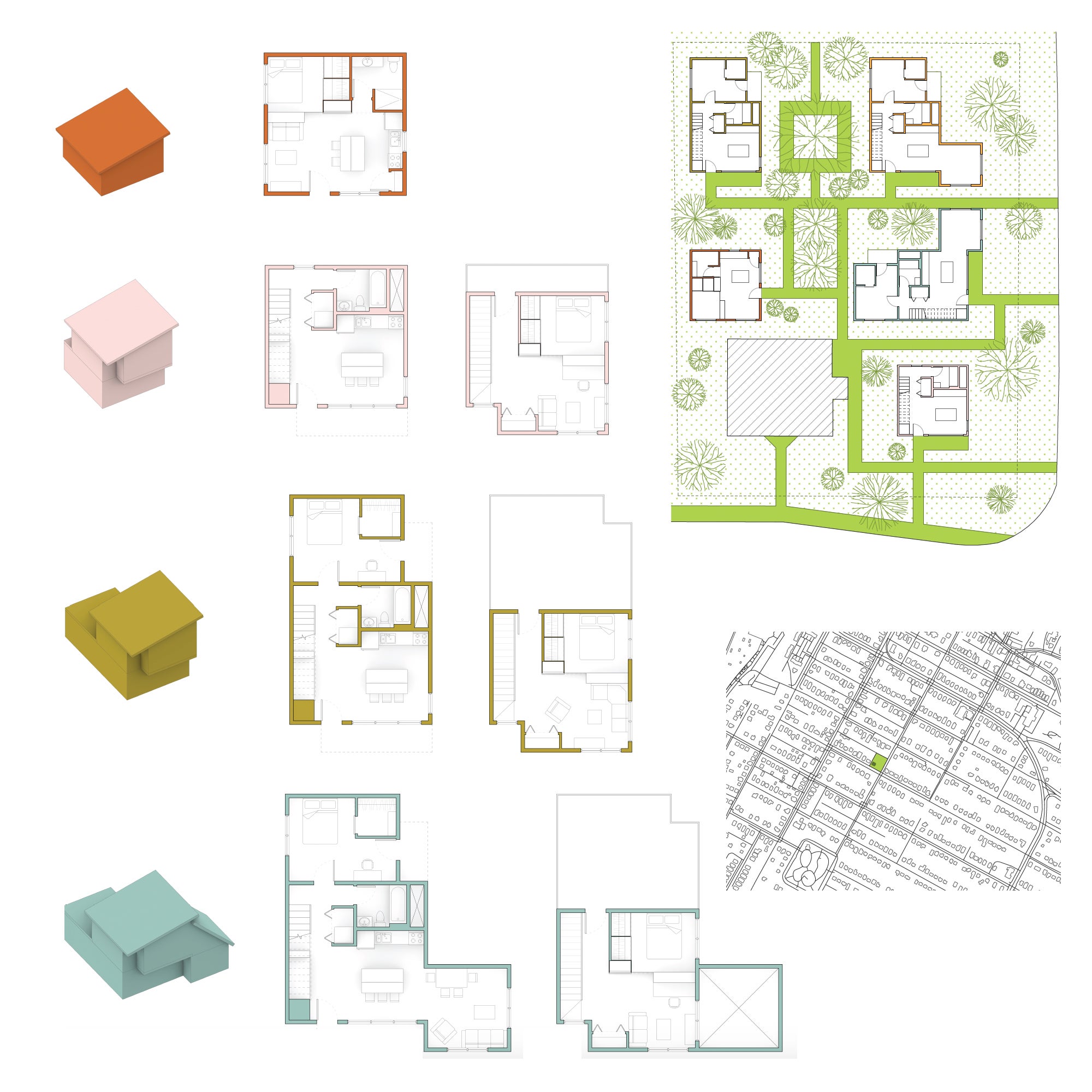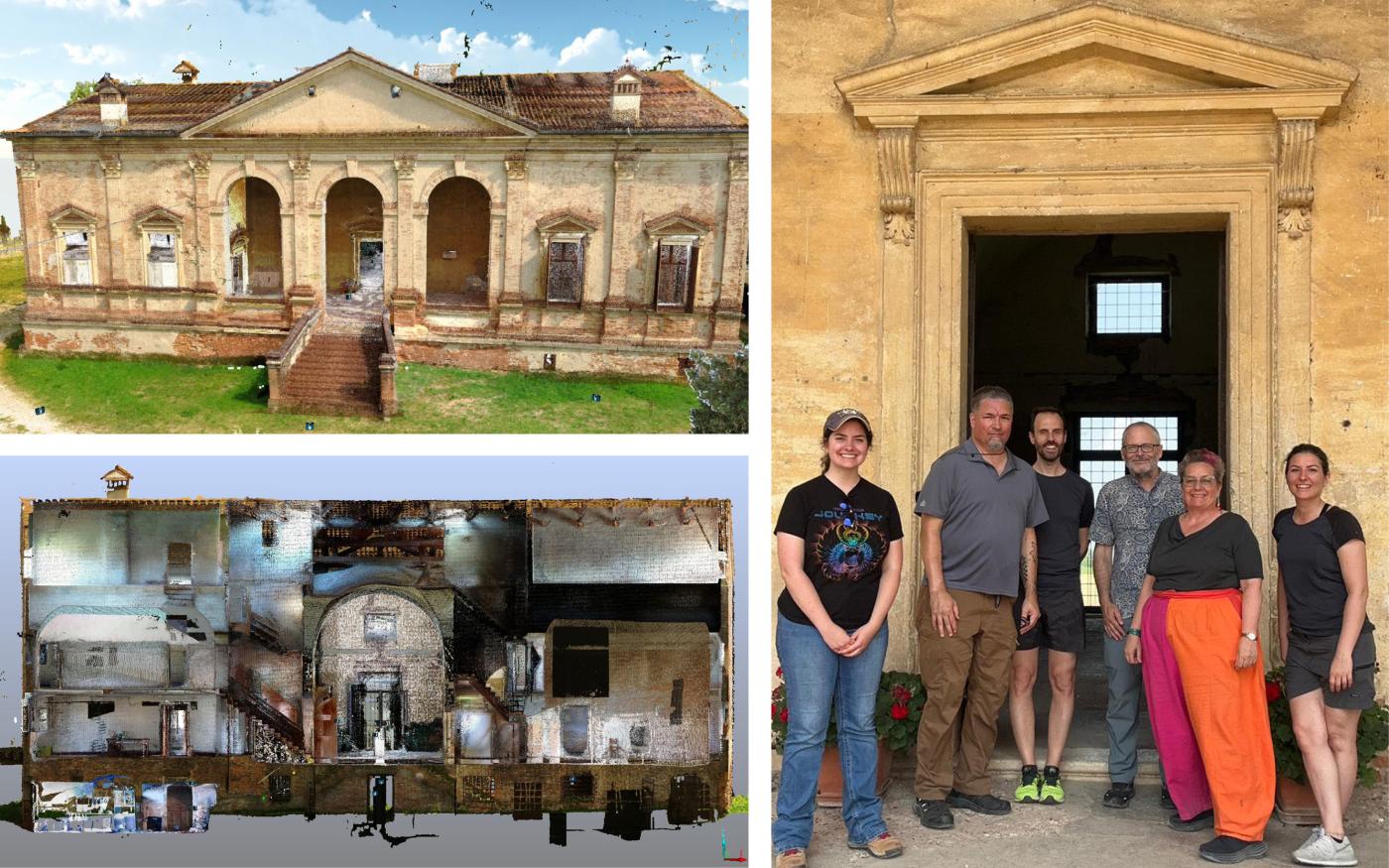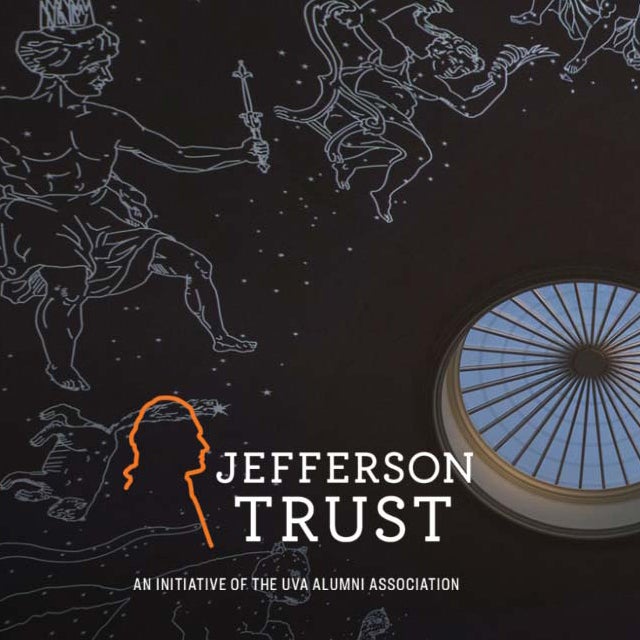
UVA Historic Preservation Expands Collaborations in the Veneto

This past summer, UVA School of Archtecture’s Historic Preservation Program strengthened its ties in northern Italy through a collaboration with the University of Padua and the school's long-standing programs in the Veneto. Associate Professor of Architectural History and Director of the Historic Preservation Program Andrew Johnston spent May and June as a visiting scientist with the Heritage Digital Survey and Representation Research Group in the University of Padua's Department of Civil, Environmental Engineering and Architecture. His appointment, supported by the Italian University Departments of Distinction Smart Engineering Infrastructures Grant, included lectures, workshops, and studio reviews focused on digital heritage technologies.
The effort reflects UVA School of Architecture’s deep and historic connections in the Veneto. In 1975, Professor Mario di Valmarana (1929–2010) established the University’s first official study abroad program in Vicenza, followed in 1979 by a graduate program in Venice. As Andrew Johnston noted, “Mario was both an architect and interested in historic preservation.” The Vicenza and Venice programs have since become pillars of the A-School’s international presence, marking their 50th anniversary this year.
Building on that legacy, Johnston organized travel for graduate student Victoria Bitrick (BArH ’25, MArH ’26) and UVA Library Scholars’ Lab content specialist Will Rourk to join him in Padua in June, with support from UVA and the Center for Palladian Studies in America (CPSA). Rourk has spent nearly three decades advancing 3D documentation technologies for the scholarly community and has taught more than 50 architectural history students how to create history-preserving scans.

Together with UVA Associate Professor Jessica Sewell, and Italian partners Paolo Borin (University of Brescia) and Rachele Bernardello (University of Padua), the team digitally recorded the Renaissance-era Villa Gazzotti Grimani Marcello Curti, designed by Andrea Palladio between 1542–1543. This understudied villa is especially interesting to Johnston and his collaborators because it incorporates a preexisting medieval tower. Using Simultaneous Localization and Mapping (SLAM) technology, the group collected a detailed dataset spanning cellar to roof, offering new insights into Palladio’s design strategies. This was the first time the UVA team employed SLAM—an incredibly efficient scanning technology—in their preservation work.
While in Italy, the group also convened a one-day symposium at the University of Padua, bringing together faculty and students from Padua, Brescia, and Università Iuav di Venezia. At the event, Bitrick presented her application of 3D laser scanning in her undergraduate thesis. “By presenting her work at this international symposium, Victoria demonstrated the excellence of her scholarship,” Johnston said.

An additional highlight of the trip was the team’s digital scanning of the Ponte degli Alpini, a covered wooden bridge designed by Andrea Palladio in 1569 in Bassano del Grappa. Johnston described the experience as “wonderful and really quite surprising.” Bitrick later reflected on the bridge in her article for CPSA's publication, Palladiana: “While the experience on the bridge evokes Palladio's dual intent of transportation and recreation, the view of the bridge itself reveals the success of Palladio's design of the Ponte Vecchio as a beautiful architectural form.”
At UVA, Johnston, Rourk, and students in the Historic Preservation Program are building a growing collection of scans of Palladian and Palladian-inspired works, including Jefferson’s Rotunda. Many of these scans are accessible through VIRGO and are central to the program’s goals: to expand the digital heritage database at UVA, to continue training students in cutting-edge preservation technologies, and to extend the program’s reach in the Veneto. The team has already completed exterior scans of Palladio’s Villa Rotonda in Vicenza, and hope to continue work there and at other sites in the Veneto in the near future.
Through these collaborations, the Historic Preservation Program continues to honor Mario di Valmarana’s vision of extending UVA into the world, uniting architectural history, preservation practice, and digital innovation across continents.
Special thanks to Associate Professors Inés Martín-Robles and Luis Pancorbo—faculty directors of the Vicenza Summer Program—for helping to provide access to the Villa Gazzotti Curti and welcoming collaboration with the Historic Preservation team.


